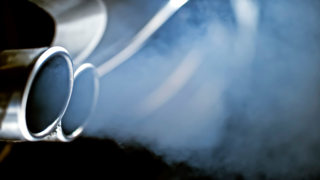The chancellor has cancelled the planned rise in fuel duty, while also introducing two new company car tax bands for ultra-low emission vehicles.
The 1.89 pence per litre fuel duty increase that was planned for September 1, 2013, will be scrapped. This means that fuel duty will have been frozen for nearly three and half years, the longest duty freeze for over 20 years
Chris Chandler, principal consultant at Lex Autolease, said: “Scrapping the planned rise in fuel duty is welcome news for businesses, many of which rely on a fleet of vehicles to trade, and help keep Britain’s economy moving.
“However, managing costs will continue to be a significant challenge for fleet managers, who should not forget the importance of fuel efficiency and monitoring driver behaviour.”
The Government says that its actions on fuel duty will have eased the burden on motorists by £21.5 billion over the Parliament to 2015-16.
From April 2013, pump prices will be 13 pence per litre (ppl) lower than under the previous Government’s plans, and are forecast to be 18ppl lower by the end of the Parliament.
The Government has said it will also work with motorway service areas and other relevant bodies to improve the availability of fuel price information to motorway users.
Meanwhile, the Government is introducing two new company car tax (CCT) bands for ultra-low emission vehicles.
From April 2015, two new CCT bands will be introduced at 0-50g/km and 51-75g/km. The appropriate percentage of the list price subject to tax for the 0-50g/km will be 5% in 2015-16, and 7% in 2016-17.
The appropriate percentage of the list price subject to tax for the 51-75g/km CO2 band will be 9% in 2015-16 and 11% in 2016-17.
In 2017-18 there will be a 3 percentage point differential between the 0-50 and 51-75g/km bands, and between the 51-75 and 76-94g/km band.
In 2018-19 and 2019-20 there will be a 2 percentage point differential between the 0-50 and 51-75g/km bands and between the 51-75 and 76-94g/km bands.
In future years CCT rates will be announced three years in advance and the Government will review these incentives for ULEVs in light of market developments at Budget 2016, to inform decisions on CCT from 2020-21 onwards.
Chandler said: “This is a positive development and should help to stimulate the fledgling market for ultra-low emissions vehicles.
“Aligning these vehicles to low taxation motoring should help persuade more fleets to use them as part of their everyday operations.”
George Osborne was delivering his fourth Budget speech, but against a backdrop of weak economic growth, the chancellor was left with little room for manoeuvre.
The Office for Budget Responsibility (OBR) had forecast growth of 1.2% this year and 2% in 2014, but those figures were revised down today.
Instead, the OBR is now predicting growth of 0.6% in 2013, 1.8% in 2014, 2.3% in 2015, 2.7% in 2016 and 2.8% in 2017.
However, the deficit continues to come down, according to Osborne. Three years ago the Government borrowed £1 for every £4 it spent. Osborne says the deficit has fallen from 11.4% of GDP to a forecast of 7.4% this year.
He added that public sector net debt is forecast to be 75.9% of GDP this year, 79.2% next year, and 82.6% the year after and 85.1% in 2015-16. But he says it will fall to 84.8% by 2017-18.
Other measures announced, included:
Fuel benefit charge (FBC) – From April 6, 2014, the FBC multiplier will increase by RPI for both cars and vans. For 2013 the van fuel benefit charge increases from £550 to £564, and the car fuel benefit charge increases from £20,200 to £21,100.
Van benefit charge (VBC) – the Government will freeze the VBC at £3,000 in 2013-14 and will increase it by the RPI only from April 6, 2014. The Government commits to pre-announcing the VBC one year ahead.
Capital allowances for business cars: first year allowances (FYA) – As announced at Budget 2012, the 100% FYA for businesses purchasing the lowest emissions vehicles will be extended until March 31, 2015.
From April 2013, the carbon dioxide emissions threshold below which cars are eligible for the FYA will be reduced from 110g/km to 95g/km and leased business cars will no longer be eligible for the FYA.
The Government will extend the FYA for a further three years until March 31, 2018. From April 2015, the carbon dioxide emissions threshold will be reduced from 95g/km to 75g/km.
The Government will review the case for going further with the FYA, and the appropriate emissions threshold, at Budget 2016.
Capital allowances for business cars: as announced at Budget 2012, the carbon dioxide emissions threshold below which cars are eligible for the main rate of capital allowances will be reduced from 160g/km to 130g/km from April 2013.
The Government will review the main rate emissions threshold at Budget 2016, with any amendments taking effect from April 2018.
VED: From April 1, 2013, VED rates will increase in line with RPI, apart from VED rates for heavy goods vehicles (HGVs) which will be frozen in 2013-14.
The Government has no plans to make significant reforms to the structure of VED for cars and vans in this Parliament.
To read the Budget document, click here.























Login to comment
Comments
No comments have been made yet.